Fabricating and Characterizing the Microfluidic Solid Phase Extraction Module Coupling with Integrated ESI Emitters †
Abstract
:1. Introduction
2. Materials and Methods
2.1. Materials and Equipment
2.2. Microfluidic Chip Design and Fabrication
2.3. SPME Particles Filling and Expriment Setup
2.4. SPME Experiments
3. Results and Discussion
3.1. Single Standard Sample SPME
3.2. Bio-Chemical Sample SPME
4. Conclusions
Author Contributions
Acknowledgments
Conflicts of Interest
References
- Mark, D.; Haeberle, S.; Roth, G.; Von, S.F.; Zengerle, R. Microfluidic lab-on-a-chip platforms: Requirements, characteristics and applications. Chem. Soc. Rev. 2010, 39, 1153–1182. [Google Scholar] [CrossRef] [PubMed]
- Culbertson, C.T.; And, S.C.J.; Ramsey, J.M. Microchip devices for high-efficiency separations. Anal. Chem. 2000, 72, 5814–5819. [Google Scholar] [CrossRef] [PubMed]
- Gao, D.; Liu, H.; Jiang, Y.; Lin, J.M. Recent advances in microfluidics combined with mass spectrometry: Technologies and applications. Lab Chip 2013, 13, 3309–3322. [Google Scholar] [CrossRef] [PubMed]
- Oleschuk, R.D.; Harrison, D.J. Analytical microdevices for mass spectrometry. TrAC Trends Anal. Chem. 2000, 19, 379–388. [Google Scholar] [CrossRef]
- Manisali, I.; Chen, D.D.Y.; Schneider, B.B. Electrospray ionization source geometry for mass spectrometry: Past, present, and future. TrAC Trends Anal. Chem. 2006, 25, 243–256. [Google Scholar] [CrossRef]
- He, X.; Chen, Q.; Zhang, Y.; Lin, J.M. Recent advances in microchip-mass spectrometry for biological analysis. Trends Anal. Chem. 2014, 53, 84–97. [Google Scholar] [CrossRef]
- Chambers, A.G.; Ramsey, J.M. Microfluidic dual emitter electrospray ionization source for accurate mass measurements. Anal. Chem. 2012, 84, 1446–1451. [Google Scholar] [CrossRef] [PubMed]
- Koster, S.; Verpoorte, E. A decade of microfluidic analysis coupled with electrospray mass spectrometry: An overview. Lab Chip 2007, 7, 1394–1412. [Google Scholar] [CrossRef] [PubMed]
- Feng, X.; Liu, B.F.; Li, J.; Liu, X. Advances in coupling microfluidic chips to mass spectrometry. Mass Spectrom. Rev. 2015, 34, 535–557. [Google Scholar] [CrossRef] [PubMed]
- Ohla, S.; Belder, D. Chip-based separation devices coupled to mass spectrometry. Curr. Opin. Chem. Biol. 2012, 16, 453–459. [Google Scholar] [CrossRef] [PubMed]
- Yu, C.; Qian, X.; Chen, Y.; Yu, Q.; Ni, K.; Wang, X. Three-dimensional electro-sonic flow focusing ionization microfluidic chip for mass spectrometry. Micromachines 2015, 6, 1890–1902. [Google Scholar] [CrossRef]
- Qian, X.; Xu, J.; Yu, C.; Chen, Y.; Yu, Q.; Ni, K. A reliable and simple method for fabricating a poly(dimethylsiloxane) electrospray ionization chip with a corner-integrated emitter. Sensors 2015, 15, 8931–8944. [Google Scholar] [CrossRef] [PubMed]
- Yu, C.; Qian, X.; Chen, Y.; Yu, Q.; Ni, K.; Wang, X. Microfluidic self-aspiration sonic-spray ionization chip with single and dual ionization channels for mass spectrometry. RSC Adv. 2016, 6, 50180–50189. [Google Scholar] [CrossRef]
- Kralj, J.G.; Sahoo, H.R.; Jensen, K.F. Integrated continuous microfluidic liquid-liquid extraction. Lab Chip 2007, 7, 256–263. [Google Scholar] [CrossRef] [PubMed]
- Mary, P.; Studer, V.; Tabeling, P. Microfluidic droplet-based liquid-liquid extraction. Anal. Chem. 2008, 80, 2680–2687. [Google Scholar] [CrossRef] [PubMed]
- Vas, G.; Vékey, K. Solid-phase microextraction: A powerful sample preparation tool prior to mass spectrometric analysis. J. Mass Spectrom. 2004, 39, 233–254. [Google Scholar] [CrossRef] [PubMed]
- Lord, H.; Pawliszyn, J. Evolution of solid-phase microextraction technology. J. Chromatogr. A 2000, 885, 153–193. [Google Scholar] [CrossRef]
- Arthur, C.L.; Pawliszyn, J. Solid phase microextraction with thermal desorption using fused silica optical fibers. Anal. Chem. 1990, 62, 2145–2148. [Google Scholar] [CrossRef]
- And, R.E.; Pawliszyn, J. Automated in-tube solid-phase microextraction coupled to high-performance liquid chromatography. Anal. Chem. 1997, 69, 3140–3147. [Google Scholar]
- Zhou, T.; Han, B.; Bai, H.Y.; Chen, J.H.; Liu, X.M.; Zheng, L.; Wang, X.T. Fast analysis of benzene series (BTEX) in seawater by headspace solid phase microextraction coupled with GC-MS. J. Instrum. Anal. 2014, 33, 1–6. [Google Scholar]
- Reyes-Garcés, N.; Gionfriddo, E.; Gómez-Ríos, G.A.; Alam, M.N.; Boyacı, E.; Bojko, B.; Singh, V.; Grandy, J.; Pawliszyn, J. Advances in solid phase microextraction and perspective on future directions. Anal. Chem. 2017, 90, 302–303. [Google Scholar] [CrossRef] [PubMed]
- Asl, Y.A.; Yamini, Y.; Seidi, S. Development of a microfluidic-chip system for liquid–phase microextraction based on two immiscible organic solvents for the extraction and preconcentration of some hormonal drugs. Talanta 2016, 160, 592–599. [Google Scholar] [CrossRef] [PubMed]
- Gaspar, A.; Hernandez, L.; Stevens, S.; Gomez, F.A. Electrochromatography in microchips packed with conventional reversed-phase silica particles. Electrophoresis 2008, 29, 1638–1642. [Google Scholar] [CrossRef] [PubMed]
- Nagy, A.; Gaspar, A. Packed multi-channels for parallel chromatographic separations in microchips. J. Chromatogr. A 2013, 1304, 251–256. [Google Scholar] [CrossRef] [PubMed]
- Chen, Q.; Wu, J.; Zhang, Y.; Lin, J.M.; Chem, A. Qualitative and quantitative analysis of tumor cell metabolism via stable isotope labeling assisted microfluidic chip electrospray ionization mass spectrometry. Anal. Chem. 2012, 84, 1695–1701. [Google Scholar] [CrossRef] [PubMed]
- Unger, M.A.; Chou, H.P.; Thorsen, T.; Scherer, A.; Quake, S.R. Monolithic microfabricated valves and pumps by multilayer soft lithography. Science 2000, 288, 113–116. [Google Scholar] [CrossRef] [PubMed]
- Gómezríos, G.A.; Chang, L.; Tascon, M.; Reyesgarcés, N.; Arnold, D.W.; Covey, T.R. Open port probe sampling interface for the direct coupling of biocompatible solid-phase microextraction to atmospheric pressure ionization mass spectrometry. Anal. Chem. 2017, 89, 3805–3809. [Google Scholar] [CrossRef] [PubMed]
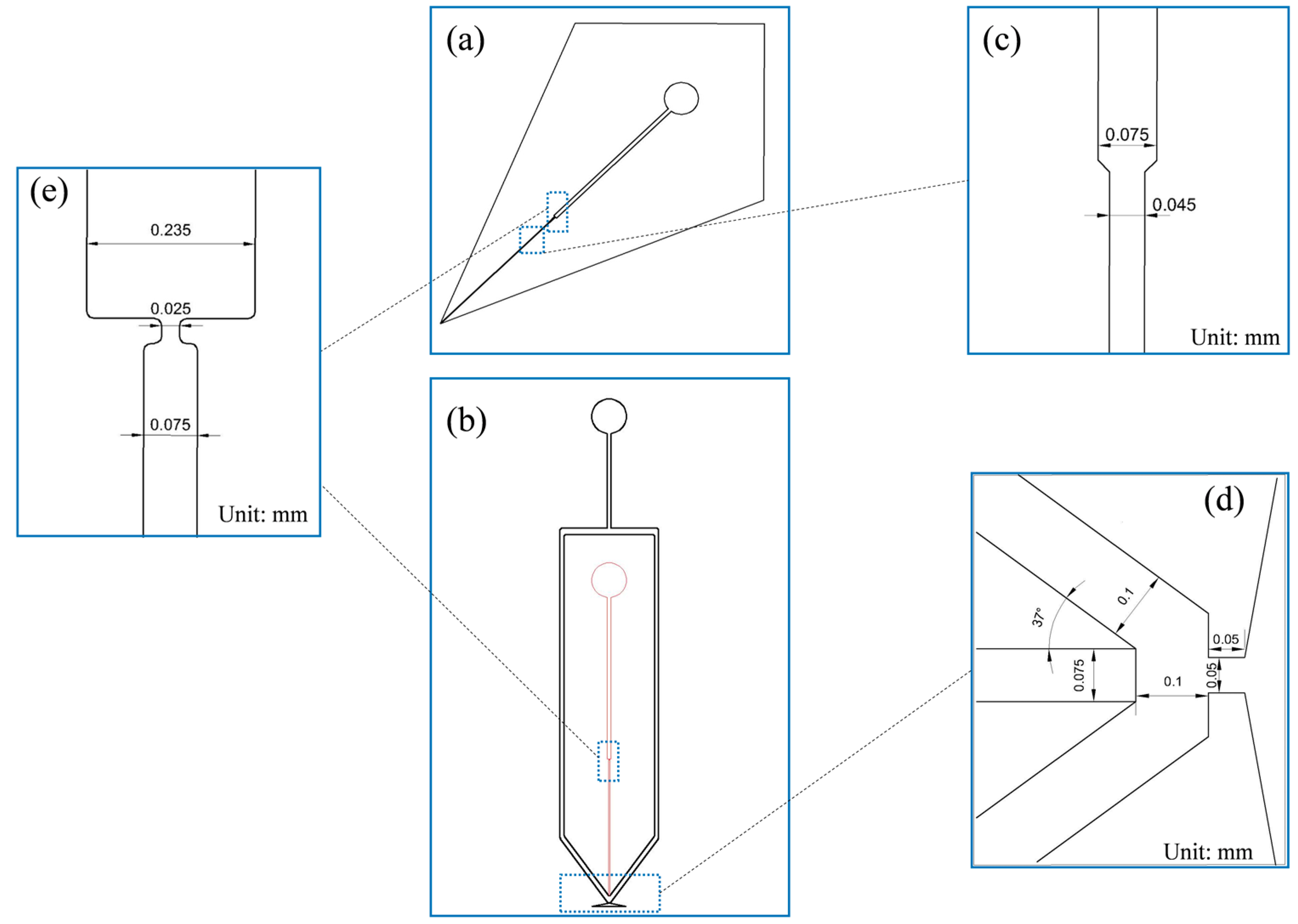
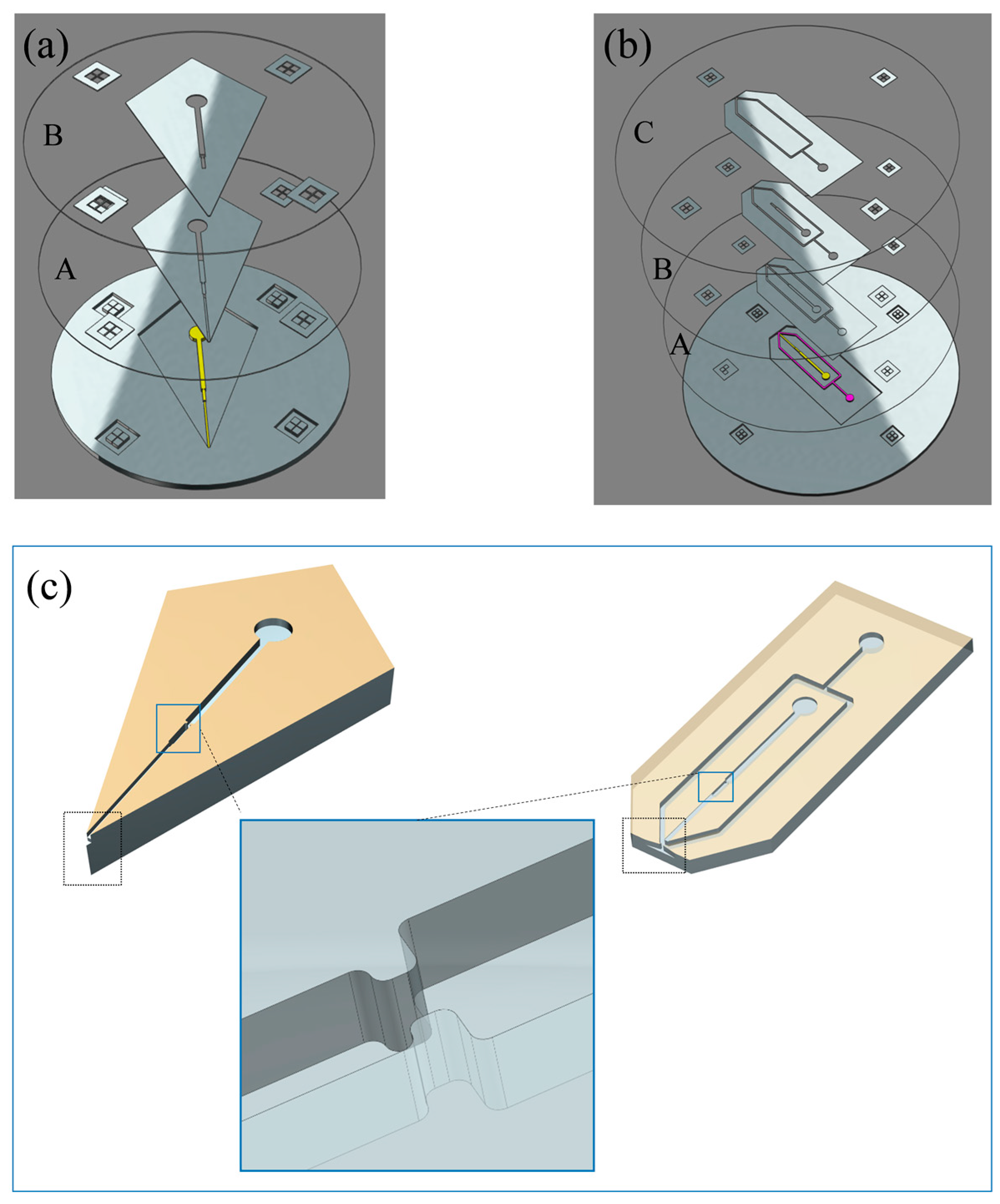
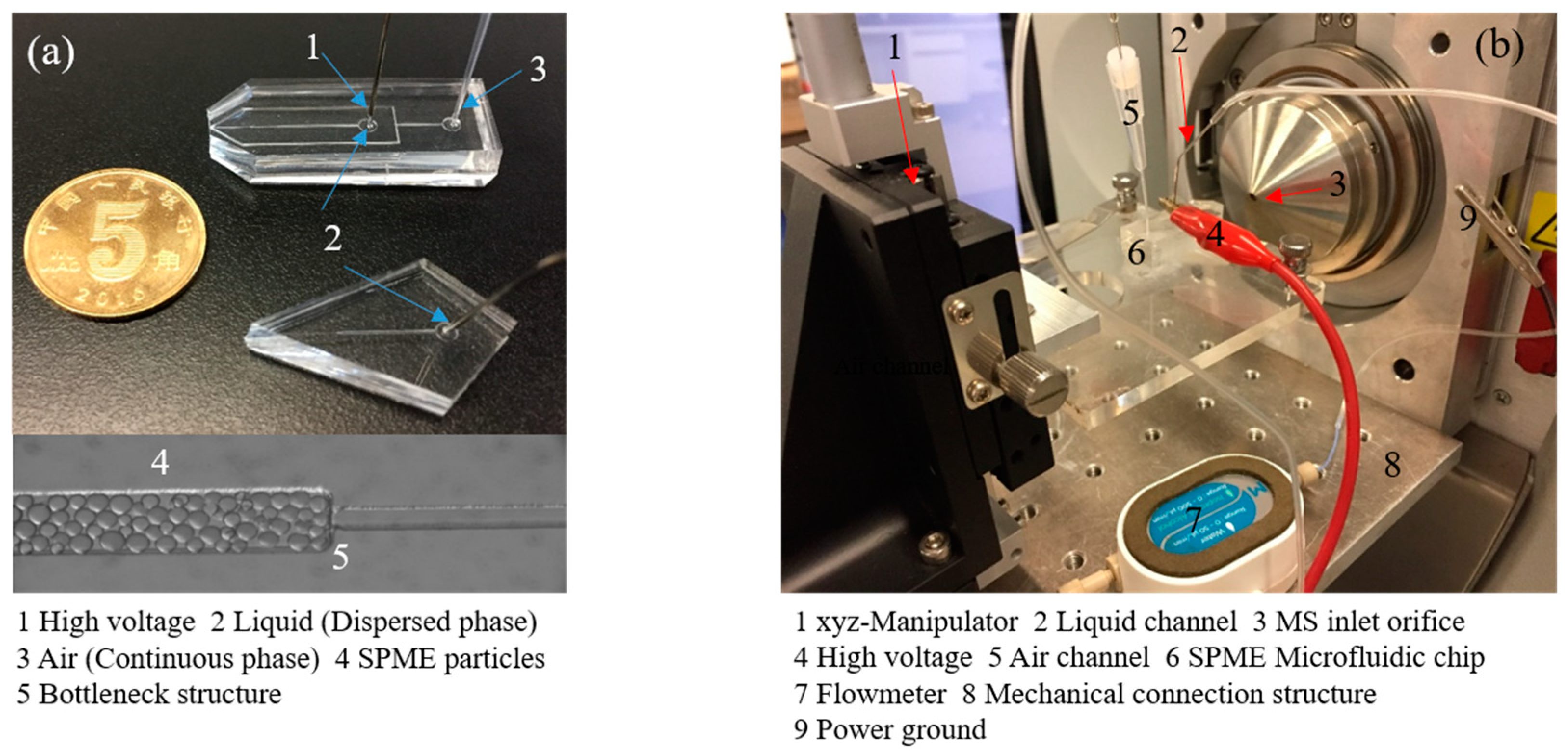
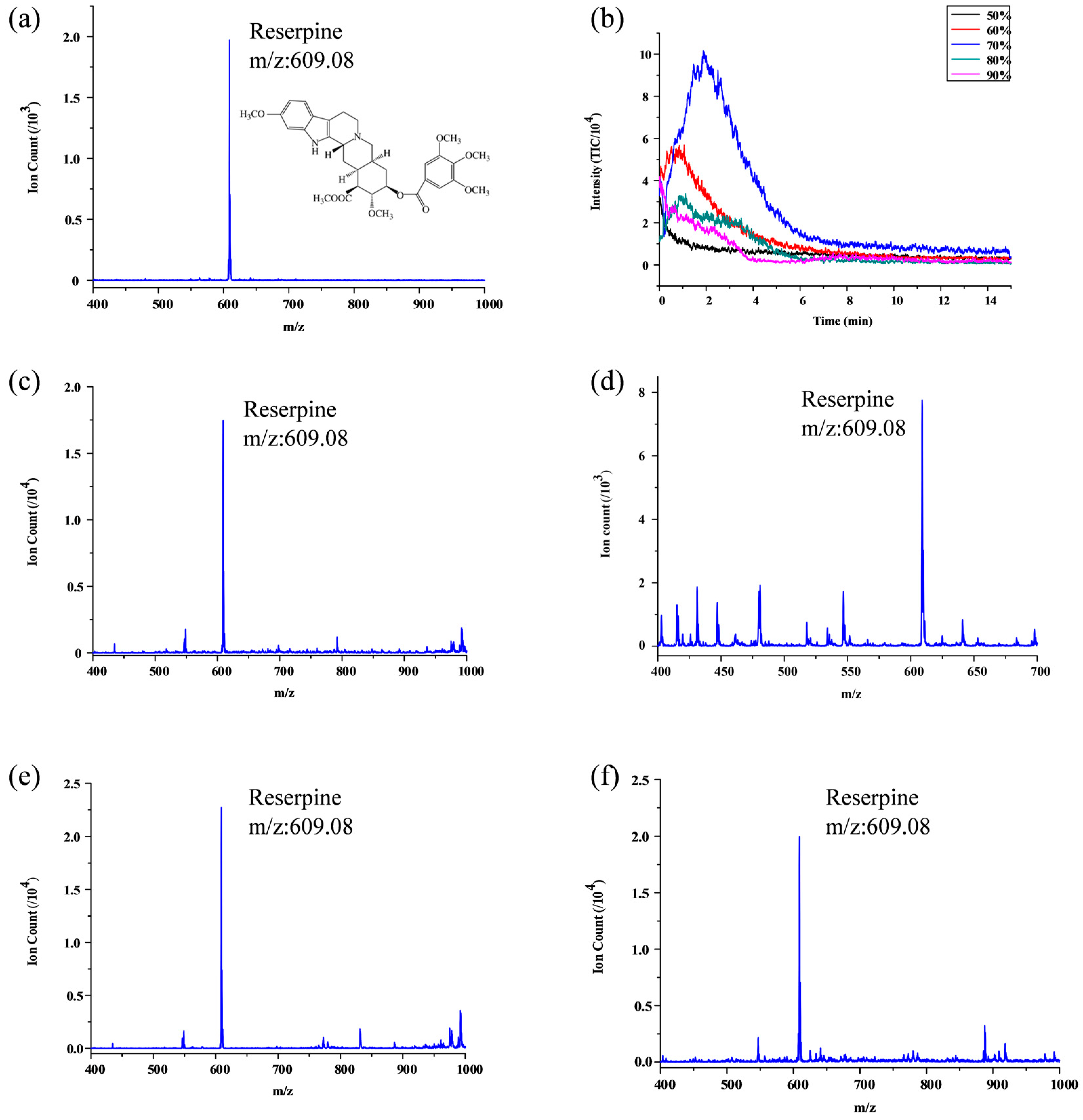
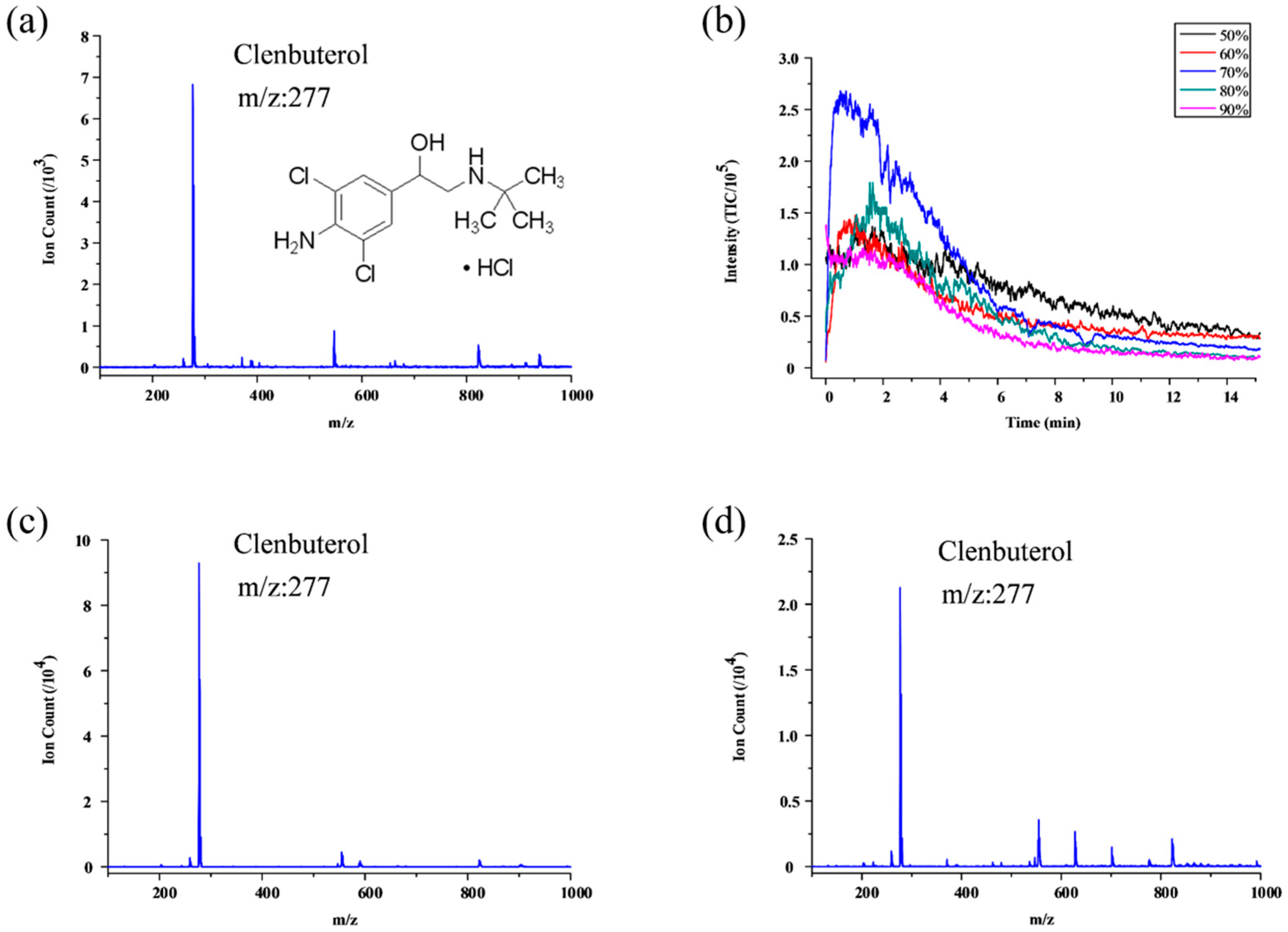
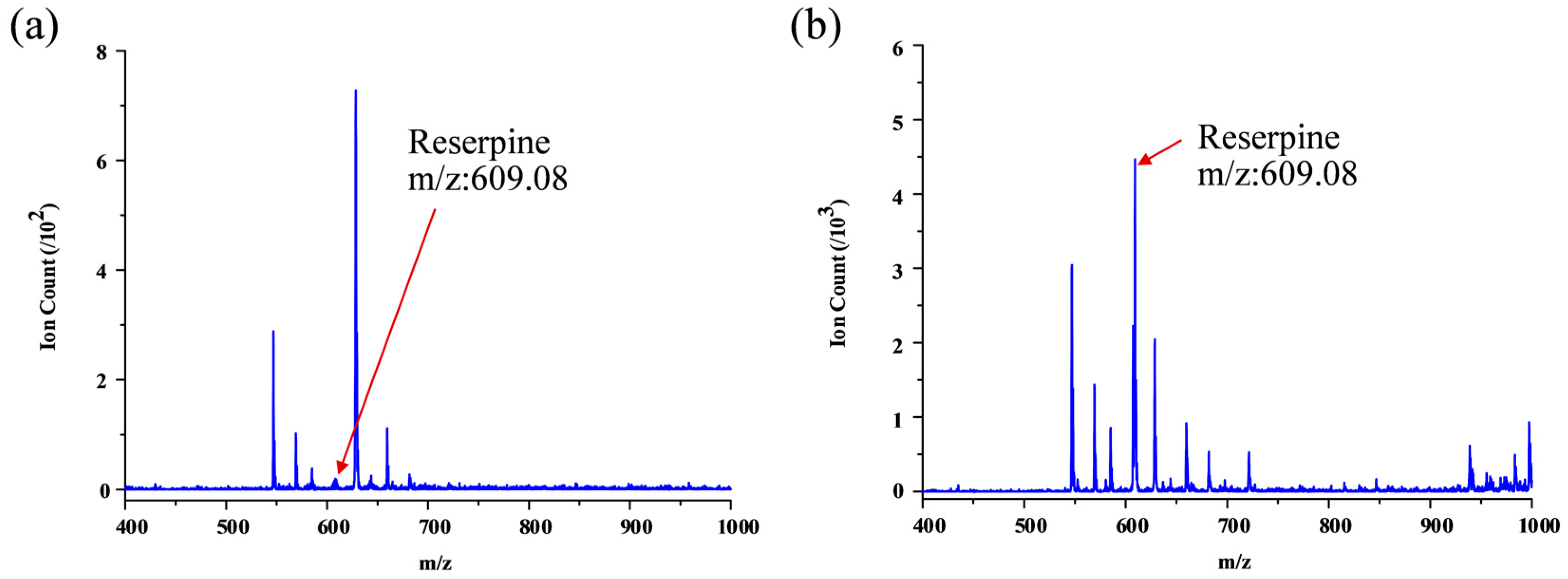
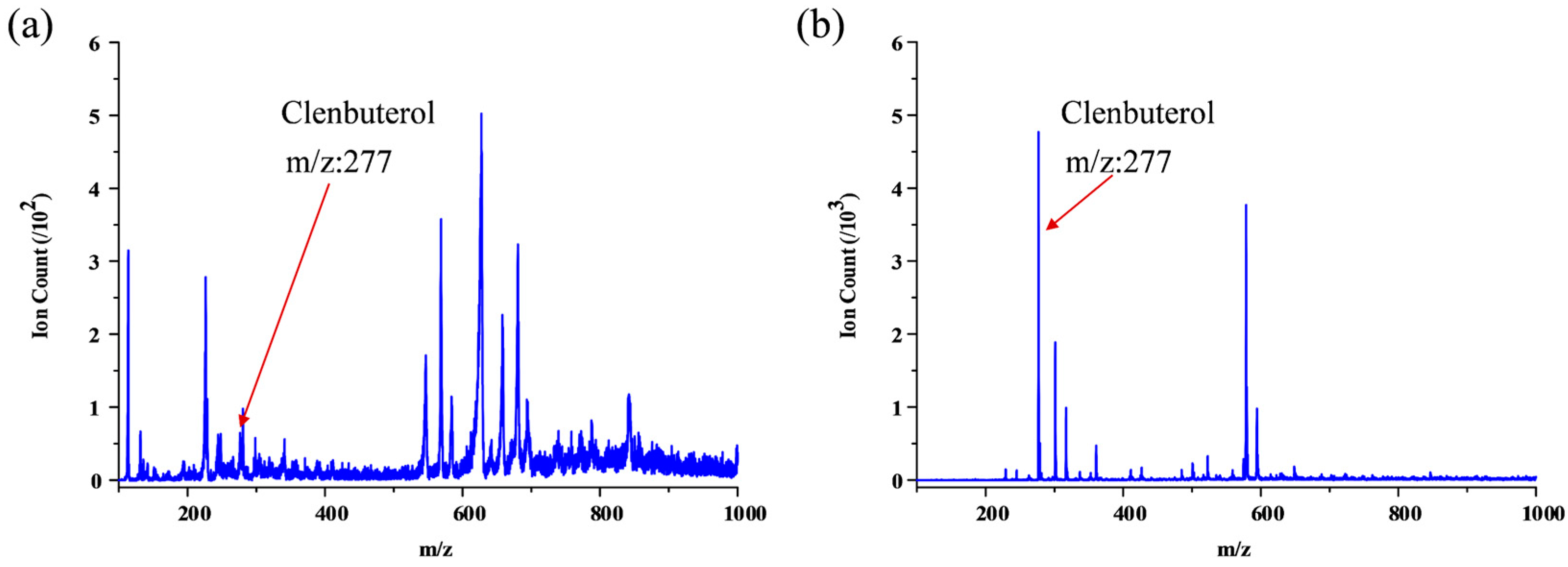
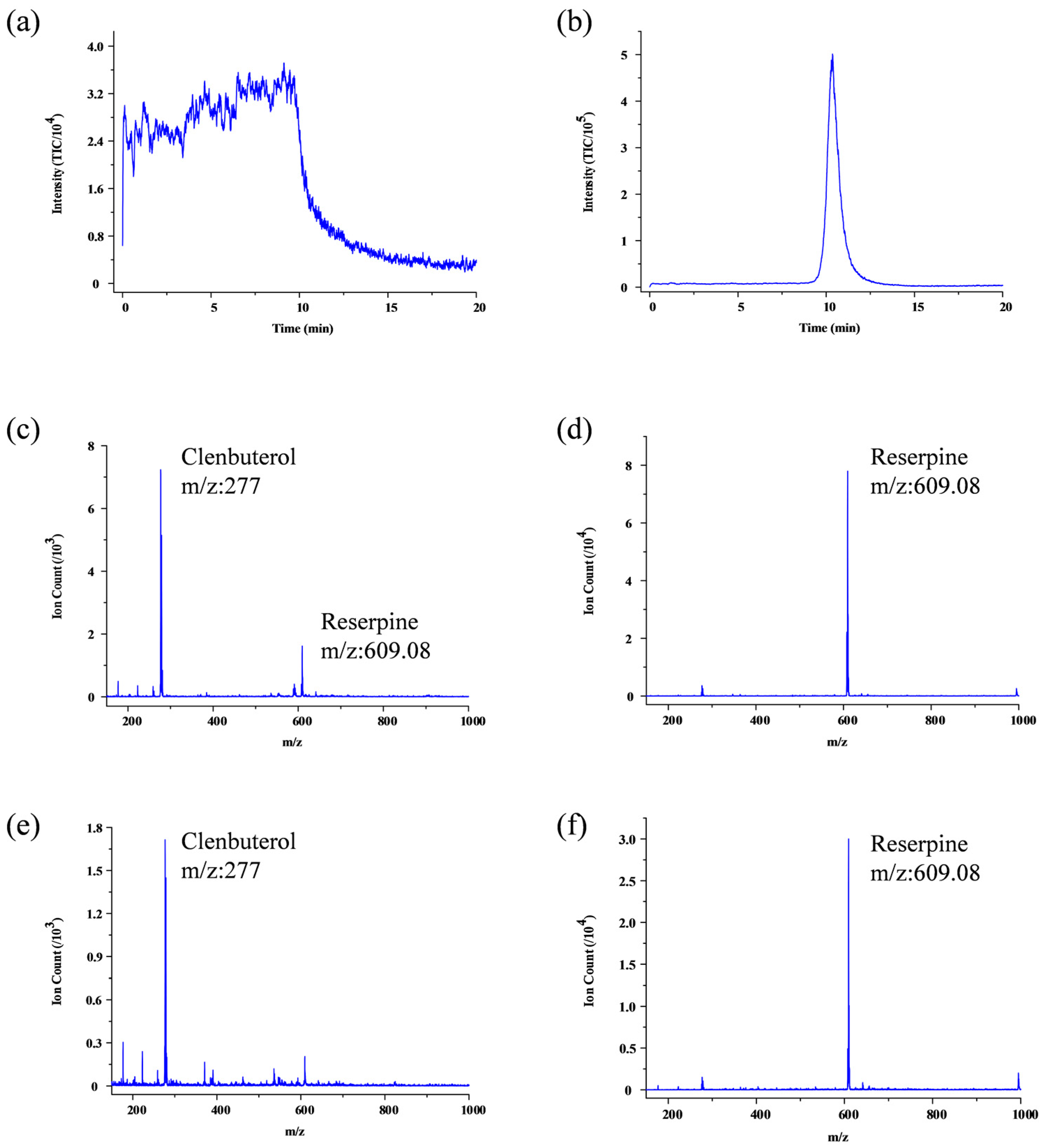
© 2018 by the authors. Licensee MDPI, Basel, Switzerland. This article is an open access article distributed under the terms and conditions of the Creative Commons Attribution (CC BY) license (http://creativecommons.org/licenses/by/4.0/).
Share and Cite
Tang, H.; Yu, Q.; Qian, X.; Ni, K.; Wang, X. Fabricating and Characterizing the Microfluidic Solid Phase Extraction Module Coupling with Integrated ESI Emitters. Micromachines 2018, 9, 212. https://doi.org/10.3390/mi9050212
Tang H, Yu Q, Qian X, Ni K, Wang X. Fabricating and Characterizing the Microfluidic Solid Phase Extraction Module Coupling with Integrated ESI Emitters. Micromachines. 2018; 9(5):212. https://doi.org/10.3390/mi9050212
Chicago/Turabian StyleTang, Hangbin, Quan Yu, Xiang Qian, Kai Ni, and Xiaohao Wang. 2018. "Fabricating and Characterizing the Microfluidic Solid Phase Extraction Module Coupling with Integrated ESI Emitters" Micromachines 9, no. 5: 212. https://doi.org/10.3390/mi9050212
APA StyleTang, H., Yu, Q., Qian, X., Ni, K., & Wang, X. (2018). Fabricating and Characterizing the Microfluidic Solid Phase Extraction Module Coupling with Integrated ESI Emitters. Micromachines, 9(5), 212. https://doi.org/10.3390/mi9050212





